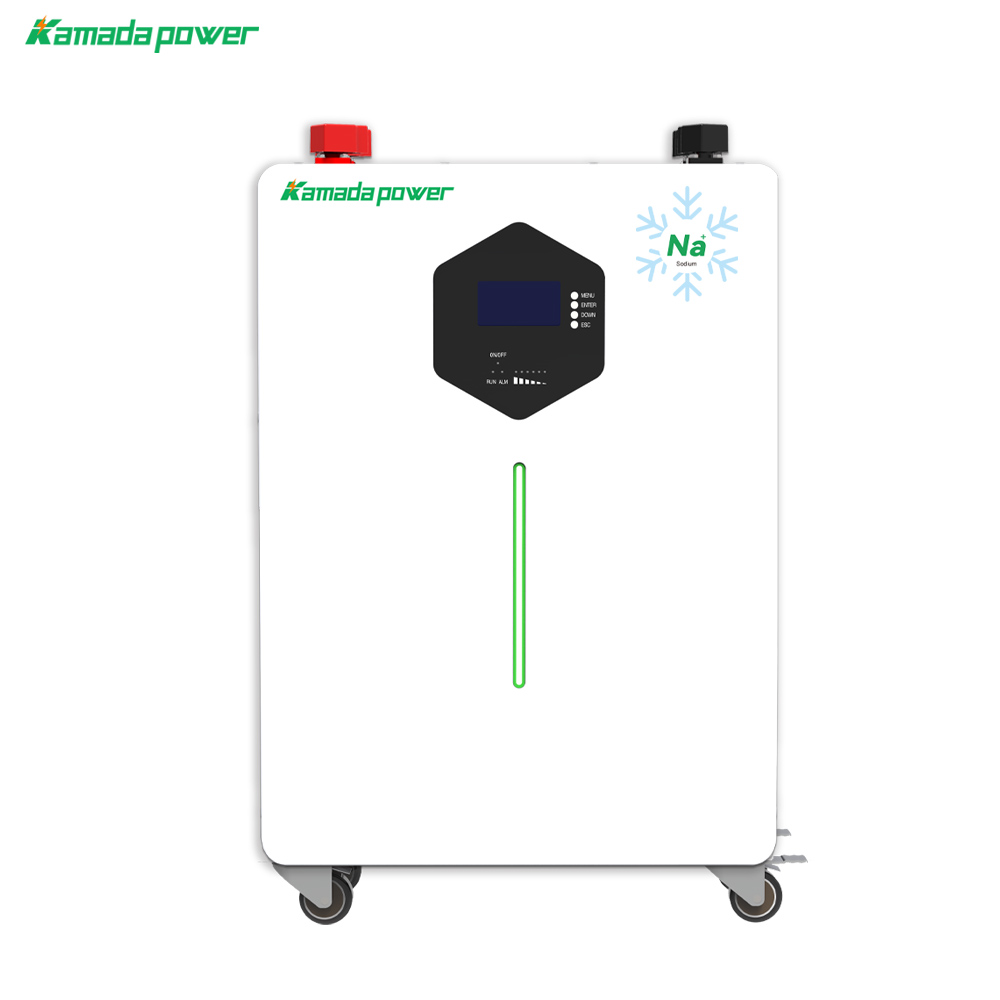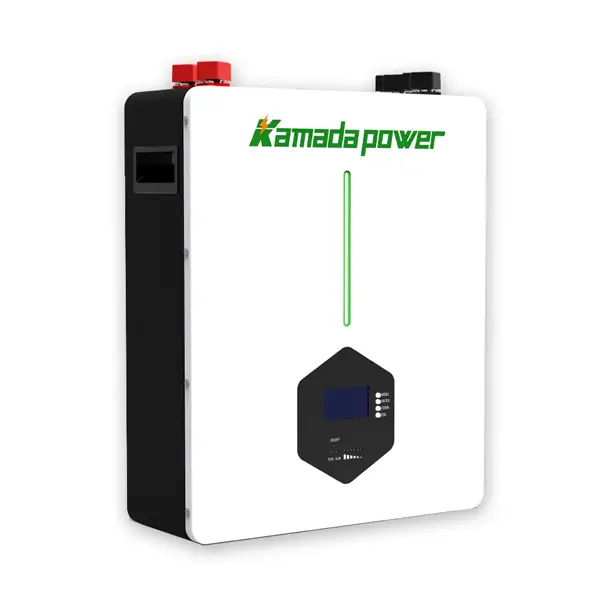Sådan sparer du penge ved at opbevare off-peak elektricitet i en Batterisystem til hjemmet. Du åbner din månedlige elregning. Dine øjne bliver store. Du begynder at tænke på den sidste måned - opvaskemaskinen, opladningen af bilen, børnene, der lader hvert eneste lys være tændt. Det føles, som om du bliver straffet bare for at leve.
Men hvad nu, hvis man kunne snyde systemet? Hvad hvis man kunne købe strøm sent om aftenen, når den er billig, gemme den og så bruge den billige strøm om dagen, når prisen er skyhøj? Det er ikke en fantasi. Det er præcis, hvad et hjemmebatteri giver dig mulighed for. Det handler om at tage kontrollen over dine regninger tilbage. Det handler om ro i sindet.

Kamada Power 10kWh natrium-ion-hjemmebatterisystem

Kamada Power 10kWh Lifepo4 Powerwall hjemmebatterisystem
Hvad er off peak-strøm, og hvordan fungerer det?
Lad os skære det ud i pap. Det er meget enkelt. Forsyningsselskaber har, hvad de kalder Tid for brug (TOU) priser. Tænk på det som at købe en flybillet. At flyve om fredagen koster mere end at flyve om tirsdagen. Elektricitet er på samme måde.
- Spidsbelastningstid. De dyre tidspunkter. Normalt sidst på eftermiddagen, når alle kommer hjem og tænder for alt.
- Off-Peak Hours. Den billige elektricitet. Som regel midt om natten, når efterspørgslen på nettet er lavest.
Hele sparetricket er at bruge et batteri til at flytte, hvornår du bruger strøm. Du fylder batteriet op med billig strøm uden for spidsbelastningsperioderne. Så bruger du det til at drive dit hus i de dyre spidsbelastningsperioder. Du undgår helt de høje priser.
Sådan lagrer et hjemmebatterisystem strøm uden for spidsbelastningen
Så hvad er det for noget? Et hjemmebatterisystem er mere end bare et batteri. Det er et team af smart teknologi, der arbejder sammen.
De vigtigste komponenter i dit system
- Batteriet. Det er her, energien lagres. Den bedste og mest almindelige type til et hjem i dag er Litium-jernfosfat (LiFePO4). Den korte grund? Det er sikkert, og det holder i lang, lang tid.
- Inverteren. Dit hus kører på vekselstrøm. Et batteri lagrer jævnstrøm. Inverteren er den enhed, der omdanner batteriets jævnstrøm til den vekselstrøm, dit hus rent faktisk har brug for.
- Den "smarte hjerne" (energistyringssystem). Det er det, der gør det hele automatisk. Den kender dit forsyningsselskabs spidsbelastningsperioder. Den fortæller systemet, hvornår det skal oplades, og hvornår det skal aflades. Du behøver ikke at røre ved det.
Den enkle daglige cyklus
- Opladning om natten: Når der ikke er spidsbelastning, f.eks. fra kl. 23 til kl. 5 om morgenen, henter systemet billig strøm fra nettet og oplader dit batteri.
- Opbevaring af strøm: Batteriet holder bare på denne billige energi.
- Sæt strøm til din dag: Den dyre spidsbelastningsperiode starter. Systemet slår automatisk over. Dit hus begynder at køre på den billige energi, du lagrede for flere timer siden.
De virkelige fordele for dit hjem og din familie
Fordelene er reelle. Og de går langt videre end bare at spare et par dollars.
Omkostningsbesparelser og tilbagebetaling
Dette er den store. Du undgår høje spidsbelastninger hver dag. For en familie med en elbil og et moderne hjem kan du spare alt fra $500 til over $1.500 om året. Systemet kan absolut betale for sig selv.
Energiuafhængighed og ro i sindet
Hvad sker der, når strømmen går? Dine naboer har stearinlys. Du har strøm. Et hjemmebatteri er en automatisk backup. Det holder de vigtige ting kørende. Køleskabet. Wi-Fi. Et par lamper. Ingen afbrydelser. Det er ægte ro i sindet.
Når du oplader dit batteri om natten, bruger du ofte renere strøm. Strøm fra vindmøller, der arbejder døgnet rundt. Ved at være smartere med din energi hjælper du med at afbalancere elnettet.
Vælg det rigtige batteri til dit hjem
Der er et par muligheder derude. Men når det gælder et hjemmesystem, er valget ret klart i dag.
LiFePO4 vs. ældre teknologier
Lad os være ærlige. Du sætter et stort batteri ind i dit hus. Sikkerhed skal være nummer et. Det er her LiFePO4 Kemien vinder. Den er bare fundamentalt mere stabil. Det er langt mindre tilbøjeligt til at blive overophedet end andre lithium-ion-typer. Desuden har et godt LiFePO4-batteri en meget lang Cyklisk levetid. Det betyder, at du kan oplade og aflade den dagligt i 10, måske 15 år. Det er en langsigtet investering.
Kan jeg tilføje solpaneler senere?
Ja, det gør jeg. Det spørgsmål får vi hele tiden. Du kan sagtens starte med bare et batteri. Spar penge på dine priser lige nu. De fleste moderne systemer er "solar-ready". Det betyder bare, at en installatør nemt kan tilføje solpaneler til din opsætning senere hen. Det er en god måde at sprede omkostningerne på.
Konklusion
A Hjemmebatteri giver dig kontrol. Kontrol over dine regninger. Det beskytter din familie mod strømafbrydelser. Det hjælper dig med at opbygge et mere bæredygtigt hjem. Det er en smart investering, som betaler sig tilbage i form af besparelser og ro i sindet i årevis. Kontakt os for Tilpasset hjemmebatteri løsninger.
OFTE STILLEDE SPØRGSMÅL
Kan jeg virkelig bruge et batteri derhjemme uden solpaneler?
Ja, det er det. Et selvstændigt batteri er en god måde at spare penge på, hvis dit forsyningsselskab har Time-of-Use-takster. Du oplader det, når strømmen er billig. Du bruger det, når strømmen er dyr. Så enkelt er det.
Hvilken størrelse batteri skal jeg bruge?
Det afhænger af dit mål. Hvis du bare vil undgå spidsbelastninger om aftenen, kan et mindre batteri på 5-10 kWh være nok. Hvis du vil have backup til hele huset, skal du bruge et større system. En god installatør vil se på dine regninger og fortælle dig, hvad du har brug for. Lad være med at gætte.
Hvad hvis jeg vil tilføje solceller senere?
Det er et smart træk. De fleste moderne batteriinvertere er hybride. De er bygget til at fungere med eller uden solceller. Det er nemt at tilføje paneler. Det vil gøre dit hjem til dit eget personlige kraftværk.
Hvor meget koster et hjemmebatteri?
Prisen kan variere meget, men de er kommet ned. Det vigtige er at tænke på de samlede omkostninger. Et godt LiFePO4-system koster måske mere på forhånd, men det holder meget længere. Det er en meget bedre værdi end et billigt batteri, der dør i løbet af et par år.